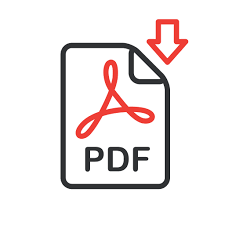FACTS ABOUT SLOVAKIA
Location: Central Europe
Capital City: Bratislava
Population: 5,447,502 (approximately in 2019)
Area: 49,035 sq. km
The highest point: Gerlachovský štít 2655 m
The lowest point: Streda nad Bodrogom 94 m
Government: Parliamentary republic
Language: Slovak
Currency: Euro
When you travel abroad people usually want to know where you are from and what is typical for your country. By answering: “I’m from Slovakia”, you can expect that many people from abroad might confuse Slovakia with Slovenia. How would you explain that Slovakia and Slovenia are two different countries which just have similar names? Work in groups and write down at least five basic differences (from geography, history, climate, famous personalities) between these two countries.
THE HISTORY OF SLOVAKIA AS AN INDEPENDENT STATE
The best way to help foreigners recall Slovakia is to mention former state of Czechoslovakia because people still remember this name better, despite the separation of the Czech Republic and Slovakia in 1993. Since January 1st, 1993 both countries exist as independent democratic republics with their own territory, government, national symbols and cultural heritage. The dissolution¹ of Czechoslovakia is officially known under the term Velvet Divorce since it happened in a peaceful manner a few years after the Velvet Revolution of 1989, which ended 41 years of communist regime² in Czechoslovakia.
POLITICAL SYSTEM
The Slovak Republic (SR) is a parliamentary democracy with a Parliament of 150 members who are elected for 4 years and the President who is elected for 5 years. This year, for the first time in history, a woman became the President of the SR. Her name is Zuzana Čaputová. She represents the SR in the world and is the formal head of the executive power although it is the Government of the SR which exercises the executive power. It is led by the Prime Minister, currently Peter Pellegrini, and by government ministers.
Executive power is responsible for the governance³ of the state and it puts laws and regulations into action. The Parliament (the National Council of the SR) represents constitutional and legislative power and its current Chairman is Andrej Danko. The National Council approves the Constitution of the SR, the state budget, legal acts, international agreements and elects some state officers. Moreover, it checks and watches over governmental activities. Concerning international organisations, the SR has been a member of NATO and European Union since 2004 and adopted the European currency, Euro, on January 1st, 2009.
GEOGRAPHY
The SR is a landlocked country surrounded by The Czech Republic, Austria, Hungary, Ukraine and Poland, and is situated in central Europe. The landlocked country means that it has no access to the ocean and this is one of the differences between Slovakia and Slovenia.
High mountain ranges (Carpathian curve – see the map below) cover the mid and the north of the country and lowlands are typical of the south and the east. The biggest and most important Slovak river, the Danube, connects the capital city Bratislava with Vienna and Budapest and it represents an important trade route for central and south-east Europe.
Vocabulary
1 a separation or an end of official organisation or legal agreement, here official end of republic; 2 a particular government or political system of a country; 3 the management of the country, a method/system used to manage the country; 4 to make a particular law or decision official/ real, put it into practice; 5 an official document with political principles by which a state is governed/managed

